July originates from the Latin word, "Julius" and it is so called in honour of Julius Caesar, who was born in this month. Although it is now high summer and we expect the weather to be warm and sunny, do take note as to what it is like on the 15th of the month. This is St. Swithin's Day, and folklore tells us that what ever the weather on this day, it will continue for the next 40 days.
"St. Swithin’s Day, if it does rain,
Full forty days, it will remain,
St. Swithin’s Day, if it be fair,
For forty days, t’will rain no more".
St. Swithin was Bishop of Winchester, and when he died requested to be buried outdoors so that he could feel the raindrops when he was dead. His wish was granted, but afterwards, the monks decided to remove his remains to a splendid shrine inside the cathedral, on the 15th July 971. On this day there was a heavy rainstorm that lasted for forty days, leading the monks to take this as a sign of 'divine displeasure’ and they left the body where it was. This lead to the belief that if it rains on St. Swithin’s Day it will rain for the next 40 days. So keep a close eye on the weather in the middle of the month!
Wild Summer Flowers
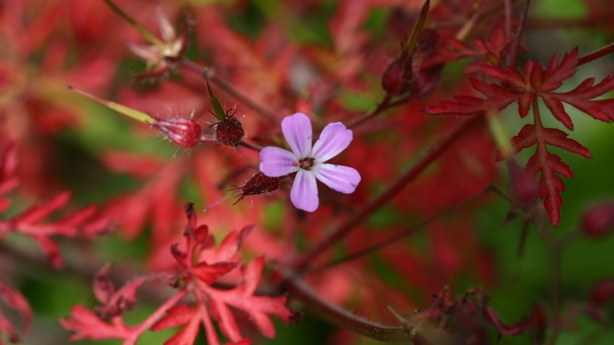
This is the month when wild flowers are at their very best. If you can visit an old meadow, enjoy all the wild flowers this month, including poppies, daisies, scabious, wild mints, red dead-nettles, bindweed and one of my favourites, Herb Robert.
Herb Robert is in fact a geranium, and it is believed that the name ‘robert’ comes from the Latin word, ruber, meaning red. This is due to the fact that in autumn its leaves and stems turn a fiery red. It will also turn red if when exposed to sunlight.
However, the leaves of this plant produce a strong odour and in some areas it is known as "Stinking Bob".
This is a good month to see Red Valerian. Look along an old country wall and you will see where this plant has buried its roots into whatever cracks it can find. Originally, red valerian was introduced as a garden plant from the Mediterranean, but has escaped and is now growing wild. Although the plant normally produces red flowers, white flowers are also found. Red valerian is a great plant to entice butterflies and a walk along an old country lane at this time of year will be well worth it.
Butterflies
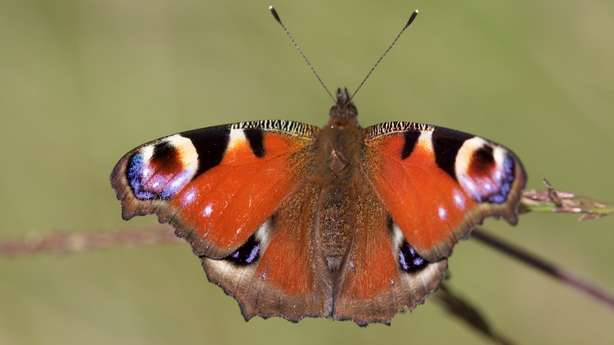
Butterflies are insects and belong to the Lepidoptera (Greek: lepis, a scale and pteron, a wing), that is insects who have wings covered in scales. It is believed that the name ‘butterfly’ is derived from the Anglo-Saxon word "butterfloege" which means flying butter. This name was probably used for the Brimstone Butterfly, a common bright yellow butterfly that the Anglo-Saxons knew well. Butterflies that you can expect to see this month include: Speckled Wood, Orange Tip, Meadow Brown, Small Tortoiseshell, the various White butterflies and the Red Admiral.
Butterflies don’t grow as adults. Their only function (as an adult) is to find a partner, mate and lay eggs. They use a siphoning tube, called a proboscis, so suck up nectar from flowers. Unlike caterpillars, which have chewing mouth parts, adults can only suck nectar. Butterflies don’t like the rain and will look for shelter till the rain passes. In fact, the major cause of death to our Cabbage White Butterfly larvae is the rain. It knocks them off their plants where they then drown or are severely injured. Next to bees, butterflies are the most important pollinators of plants. As butterflies are inse cts, they all have three pairs of legs, two pairs of wings and three body regions (head, thorax and abdomen). They also have a pair of antennae or feelers, which they use to "smell" with. Butterflies can actually taste with their feet! Their taste sensors are located there and by standing on their food they can taste it! The eyes of butterflies are referred to as compound eyes. Each eye is made up of about 6,000 lens. So, if you’re out for a walk, stop a while and watch as our butterflies go about their business, whether its feeding among the flowers or performing a mating ritual with another one.
Giant Hogweed
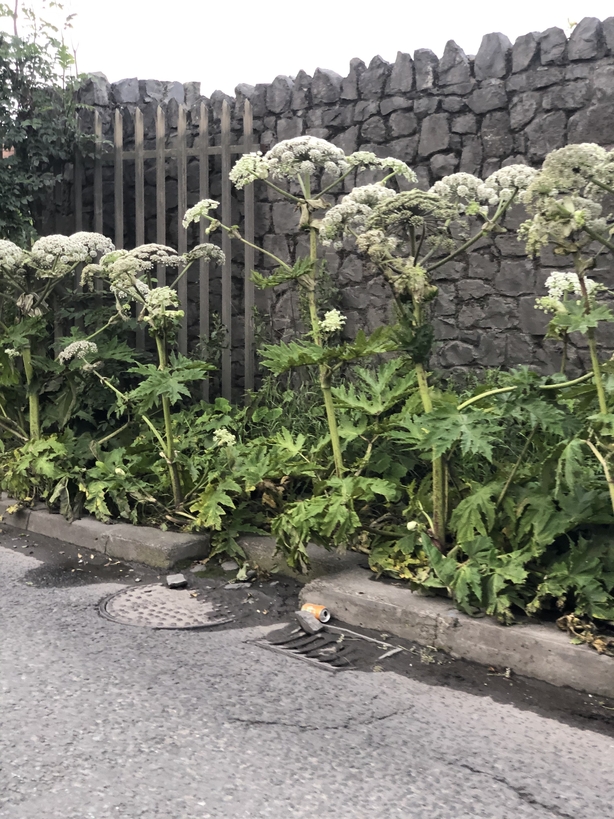
Beware of this plant! This is an alien plant that was introduced into Ireland in the late 19th Century. It is easily recognised by its considerable stature, with mature plants reaching up to 15 feet in height. It is found along riverbanks, for example along the Tolka river in Dublin. Although it looks harmless, DON'T be fooled. Giant Hogweed produces a sap that if it comes into contact with your skin will result in the formation of painful blisters and can also permanently impair the skin’s ability to filter ultraviolet A radiation.
Since the 1960’s this plant has dramatically expanded its range along many river courses. Dr. Joe Caffrey from the Central Fisheries Board, has been studying the spread of Giant Hogweed for a number of years now. Another alien that Joe is studying is Lagarosiphon major, or curly leaved waterweed. This plant is sold by garden centres as an oxygenating plant for fish tanks. Unfortunately, it has managed to find its way into rivers and lakes around the country. Currently, in Ireland, we are at an early stage of infestation. However, stems are easily broken and disperse rapidly. For a brochure, contact The Central Fisheries Board.
Ragwort
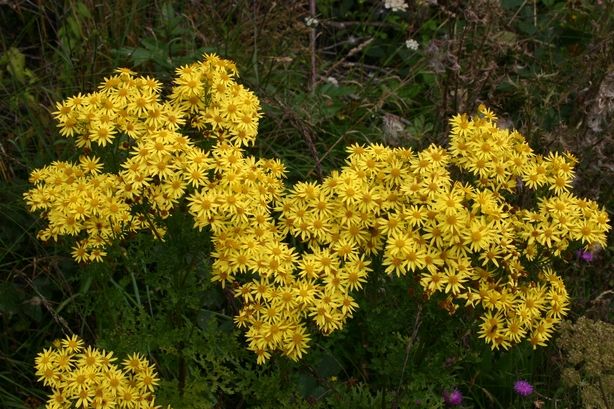
Ragwort is highly toxic to horses, cattle and sheep and is one of the most frequent causes of plant poisoning of livestock. It contains alkaloids which cause degradation of liver function which can be lethal to livestock. Sheep appear to be less affected and cattle do not generally graze ragwort directly, but its presence in hay often results in the abandonment of the crop. Ragwort is extremely successful and each plant can produce up to 150,000 seeds with a 70% germination rate. And if that is not bad enough, the seeds can lie dormant in the soil for up to 20 years. July and August sees a proliferation of ragwort in fields, waste land, roadside verges etc. The only animal that can successfully feed on this plant is the caterpillar of the cinnabar moth.
Nesting Birds
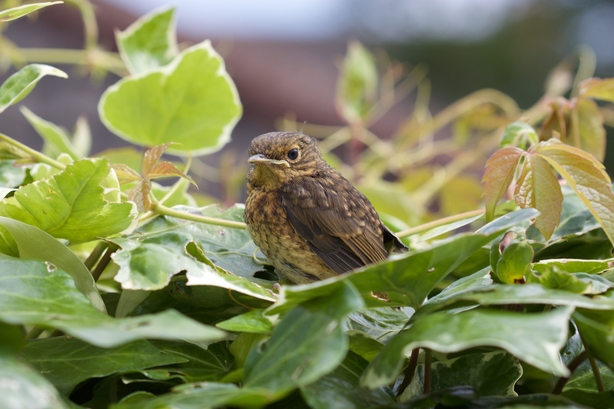
Although a lot of birds will be winding down now as far as reproduction is concerned some blackbirds and thrushes may still be on a last clutch, as are the swallows. Continue to keep an eye out for a parent bird collecting a mouthful of insects or worms from the lawn. Also keep an eye out for a thrush’s anvil. I spotted three on a recent walk through a meadow. An anvil is a flat stone that a thrush will visit. It brings its food (snails) here and uses the flat stone to smash open the snail shell to get at the food inside. You’ll know if you’ve found an anvil by the amount of broken shell present. Once you have found an anvil, keep an eye out, from a distance, and you may be treated to a rare display.
Orchids
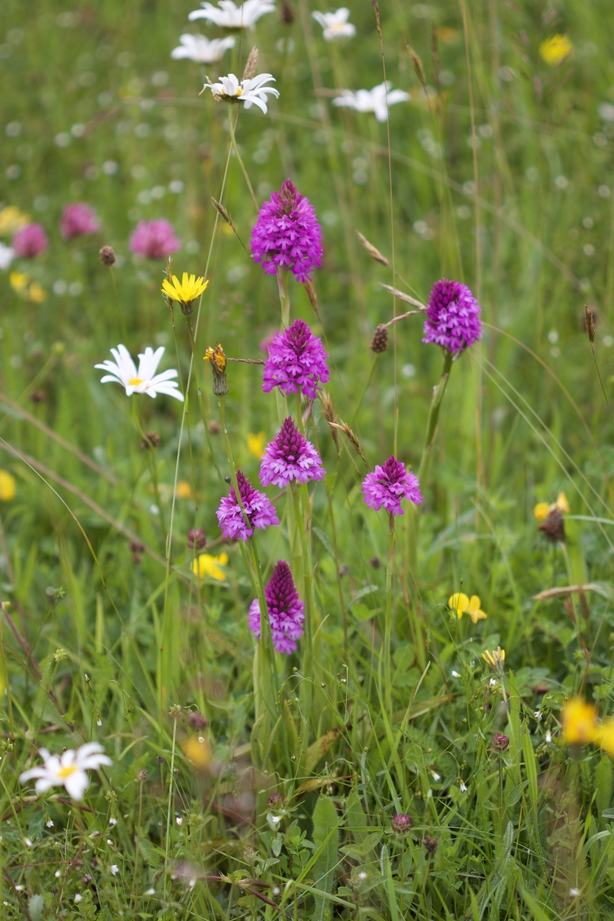
Orchids don’t grow wild in Ireland - or do they? The answer is they DO. In fact 28 different species can be found growing wild in Ireland. Recently, I visited a field in Kilternan, Co. Dublin, where up to 8 different species can be found growing. I managed to see four different species in under half an hour. In total, there were hundreds, possibly thousands of orchids growing wild in this field, a field that was earmarked as a site for a landfill site until the local residents got together and managed to save it.
Orchids belong to a huge plant family, totalling some 17,000 species. However, those in Ireland are not as bright and colourful as elsewhere, but when seen close up the flowers are amazing in their detail. Take the Bee orchid for example. The flower resembles a female bee. A male is enticed to the flower and mates with it. After a frustrating period of time, the male bee leaves, but not before he has pollinated the orchid. The Pyramidal orchid is beautiful purple orchid that is in flower this month. It has a distinctive pyrimidal shape. It produces an abundant supply of nectar, attracting both butterflies and moths.
